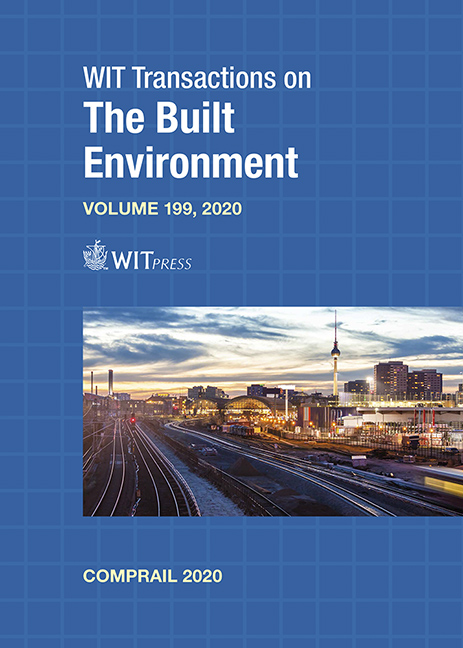LONG TRAIN DYNAMIC SIMULATION BY MEANS OF A NEW IN-HOUSE CODE
Price
Free (open access)
Transaction
Volume
199
Pages
11
Page Range
249 - 259
Published
2020
Paper DOI
10.2495/CR200231
Copyright
WIT Press
Author(s)
NICOLA BOSSO, MATTEO MAGELLI, NICOLÒ ZAMPIERI
Abstract
The need for faster heavy-haul trains with higher axle-loads is responsible for the rise of large in-train forces on wagon connection systems. These forces have a significant impact on longitudinal train dynamics (LTD) from the point of view of performances, running stability and safety during braking and traction operations. Therefore, LTD simulations represent an essential tool to predict in-train forces and to design coupling and braking systems. Long trains are typically modelled as a system of several point masses linked to each other by means of non-linear elements, summarizing the characteristics of the coupling systems. In fact, wagon connection systems present a non-linear force-deflection characteristic, with a hysteresis loop due to the different behaviour in loading and unloading states. The calculation of in train forces is nowadays performed following three main strategies, namely look-up table approaches, mathematical equations based on experimental results and “white-box” models related to physical properties of the connection systems. An International benchmark of LTD simulators was recently proposed to assess the output results obtained by different simulators, following several modelling strategies, in the simulation of the same scenarios. The research group from Politecnico di Torino joined the competition using the multibody commercial software Simpack (ver.9.4). However, inefficiencies appeared because multibody software are usually intended for the simulation of a few vehicles with many degrees of freedom (d.o.fs), rather than many wagons with few d.o.fs each. Therefore, the team developed a new LTD simulator (LTDPoliTO) in MATLAB, totally based on a vector-arithmetic logic. The new simulator can perform both dynamic investigations in time domain and modal analysis in frequency domain. The validation of LTDPoliTO was carried out by performing the four benchmark simulations and a good agreement with the other participants was obtained, in terms of both numerical results and computational speeds.
Keywords
long train simulation, LTD benchmark, draft gear, dynamics modeling, train dynamics





